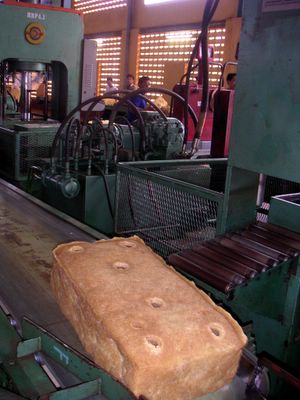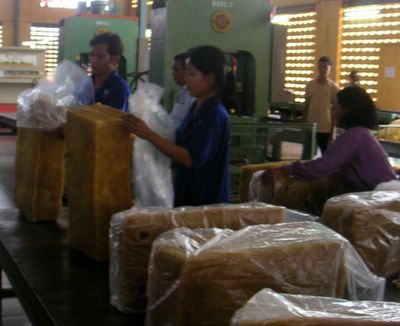Turning Rubber

Copyright Tan and Trev 2005

Copyright Tan and Trev 2005
After watching traditional methods in the plantation, the next stop was to a nearby factory to see the milky-white liquid transformed into rubber.
Our group was warned about the strong odours of the processing methods and initially thought the warning might have been overstated while walking around the factory compound.
"This isn't so bad," we agreed. The pong from the mixing tubs was confronting - like the nostril-stinging sensation of touring a sewage treatment plant - but there was nothing unbearable here. Or so we thought.
Little did we realise, as we watch tankers unloading their raw materials that we were still benefiting from the open spaces of the outdoors. Once inside the factory - and its enclosed areas - our guide's earlier warnings proved accurate on all accounts.
None of us could bear to breath through out nose. It was simply putrid. But undoubtable something that repeated exposure must somehow deaden the senses, because the workers didn't seem at all phased by the stench.
Tan spotted a few wearing "ISO 9000" Tee shirts and wondered aloud how this applied. Lorries backing up to huge open troughs didn't seem to gel with the careful and deliberate steps for quality control which she experiences daily under laboratory conditions. However it was later in the tour, watching the careful quality control methods for packaging and weight control of rubber blocks that the ISO standards began to make sense.
Rubber has been a key factor in Cambodia's economic history, so it is hardly surprising to find that this factory has internationally recognised skills in production.



0 Comments:
Post a Comment
<< Home